Video Rewind tells the BTS stories of the video store era, 1 rental at a time! Press play and adjust your tracking for 1990’s “Dick Tracy”.
The glitz, glam, and excitement of Hollywood descended upon the small town of Woodstock, Illinois in the spring of 1992. The charming town square with its brick roads and turn-of-the-century architecture was the perfect setting for filmmaker Harold Ramis and his romantic comedy starring Bill Murray, Andie MacDowell, and a little, furry weatherman. Groundhog Day found its Punxsutawney, Pennsylvania in Woodstock, Illinois, and each year the locals continue to celebrate their connection to the now-classic comedy with a week-long Groundhog Day celebration in February.
Overlooking the yearly festivities from a second-story window in the Old McHenry County Courthouse on N Johnson St. is a 1,000 square foot room that housed The Chester Gould-Dick Tracy Museum. Sitting above the Public House restaurant (the bar area is featured in Groundhog Day), the museum was founded in 1991, in part funded by a benefit screening on June 13, 1990 (a day before its world premiere) of the motion picture Dick Tracy starring and directed by Warren Beatty. The museum honored longtime Woodstock, Illinois resident Chester Gould and his hard-boiled detective comic-strip character Dick Tracy that he created in 1931.
Although the museum enjoyed success throughout the 1990s, unlike Groundhog Day and its yearly celebration, it didn’t have the same staying power and was forced to close its doors in June of 2008. Museum secretary Jeff Kersten had always been “befuddled” by the town’s fascination with Groundhog Day and saddened by its seemingly lack of interest in one of its own, saying “the thing that has an actual connection to the town — Dick Tracy — has gone by the wayside.”
The big-budget, Hollywood movie of the same name was destined for the same fate.
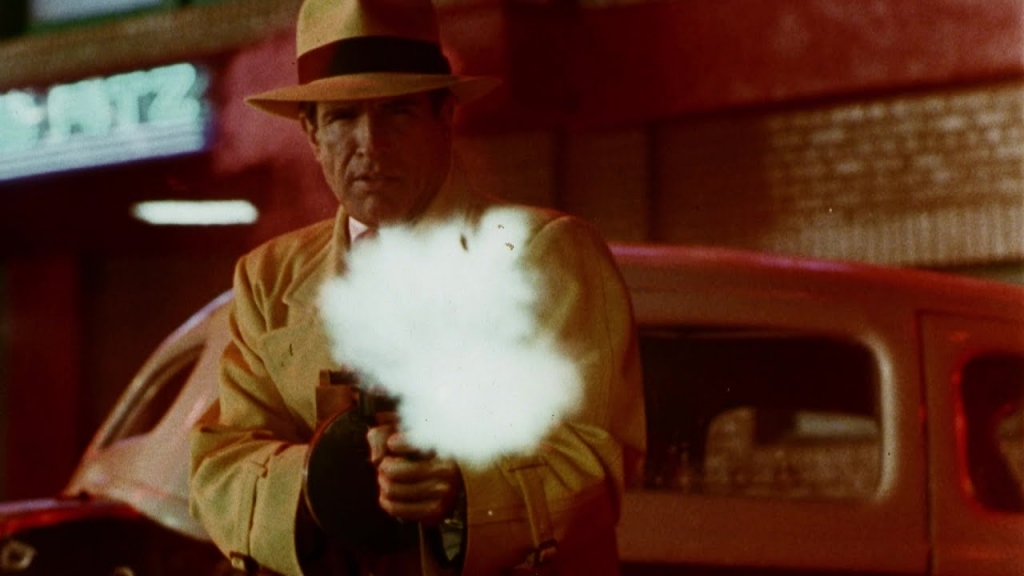
A tent-pole summer release with an all-star cast, Dick Tracy was primed to be the biggest film of 1990, but has since fallen by the wayside and barely registers in the comic book movie conversation. The production value and execution of Warren Beatty’s Dick Tracy is anything but cynical filmmaking, and it deserves a better legacy.
In the 30 years following his first film role in Splendor in the Grass opposite Natalie Wood in 1961, Warren Beatty had been a continuous force in Hollywood. A filmmaking swiss army knife, by 1982 Beatty had racked up an impressive 11 Oscar nominations (more would come) for acting, producing, writing, and directing, including winning Best Director in 1981 for Reds. Beatty had been interested in a big-screen adaptation of Dick Tracy since the mid-1970s when producer Michael Laughlin (Two Lane Blacktop) held the rights to the character.
Switching hands a few more times, the Dick Tracy project ultimately ended up at Paramount under the eye of Michael Eisner and Jeffrey Katzenberg. Universal agreed to come aboard as a co-producer, and Jim Cash and Jack Epps, Jr. (who would go on to write Top Gun) were hired to write a script. The 2 studios then attempted to attach several high-profile directors to the Dick Tracy motion picture, including Steven Spielberg, John Landis, Walter Hill, and Richard Benjamin. Landis left the project after his horrific mishap on Twilight Zone: The Movie left Vic Morrow and 2 young actors dead, and Walter Hill stepped away because his gritty vision clashed with Beatty’s stylized, comic-strip vision after he became attached to star.
Beatty said there were two Dick Tracy cartoon panels that instantly convinced him he had to make a film based on the comic strip. One was Tracy punching a bad guy, knocking his hat off, and saying, “take that, you cockroach!” The other was Tess Trueheart, Tracy’s girlfriend, standing with her hands on her hips saying, “Dick Tracy, are you asking me to marry you?” Upon seeing these, Beatty thought to himself, “I’ve got to make a movie of this, this could be fun,” adding “and it was. It was the most fun I ever had making a movie.”
Having the reputation of a perfectionist and with the history of his many-faceted approach to filmmaking, Beatty decided to purchase the rights to Dick Tracy for himself, including the screenplay written by Epps and Cash.
Now in a producer role, Beatty tried to get Bob Fosse and Martin Scorsese to direct, but ended up taking the directing reins himself. “I think I’m an ok director,” Beatty said. “I’d prefer to have somebody else. But in a pinch, I’ll do it. This was a pinch and I did it.”
Beatty would now not only star as the yellow-coated detective (Clint Eastwood, Harrison Ford, Richard Gere, Tom Selleck, and Mel Gibson were all considered for the role), but he would produce and direct the film as well.
In his pinch, Beatty would also tailor the script a bit more to his liking, especially rewriting a lot of the dialogue with One Flew Over the Cuckoo’s Nest writer Bo Goldman. As director and with the new, polished script, in 1987 Beatty took Dick Tracy to Michael Eisner, now CEO of The Walt Disney Company, and Jeffrey Katzenberg, who oversaw Disney’s motion picture development. Eisner had worked with Beatty before as president of Paramount during the production and release of Reds.
In addition to Beatty, an all-star cast was assembled when filming began on February 1, 1989.
Bringing the villains to life would be Al Pacino as Big Boy Caprice, Dustin Hoffman as Mumbles, William Forsythe as Flattop, and appearances by James Caan and Paul Sorvino (after a reported 50 takes were needed by Beatty in one of the two scenes that Gene Hackman appeared in Reds, the actor declined to appear in Dick Tracy). Charles Durning as Chief Brandon and Dick Van Dyke as D.A. Fletcher rounded out the cops, with Glenne Headly as Tess Trueheart (Dick Tracy’s girlfriend), Charlie Korsmo as The Kid, and Madonna as sultry club singer Breathless Mahoney rounding out the cast.
Keep an eye out for Kathy Bates in a small role as a stenographer right before she became a star that same year in Misery, for which she won the Academy Award for Best Actress.
Part gangster movie, part comic book, and part love story, Dick Tracy finds the no-nonsense detective fighting a united ring of mobsters headed up by Big Boy Caprice.
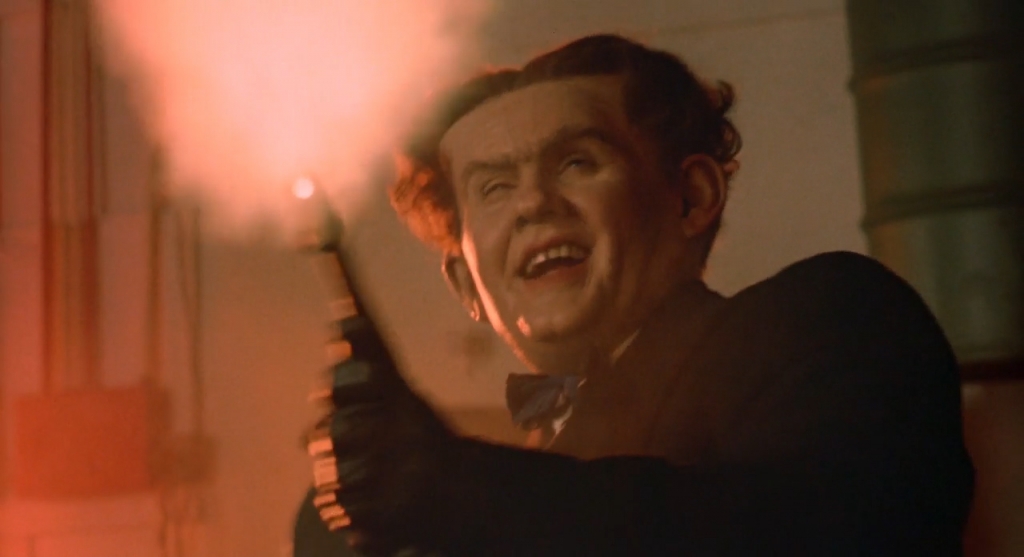
Big Boy wants to enrich himself by forcefully taking over small businesses throughout the city, starting with his two thugs Flattop and Itchy taking out some business owners during a card game. “Eat Lead Tracy,” they blast onto the wall with bullets from Tommy guns. This massacre is witnessed by The Kid, a young street dweller with a large appetite (Macaulay Culkin was considered for the role, but instead chose Home Alone). Tracy then catches The Kid stealing and, along with his girlfriend Tess Trueheart, takes him under his wing after rescuing him from his abusive owner.
Big Boy then takes the deed to the popular city hotspot Club Ritz and kills the former owner, Lips Manlis.
The character of Big Boy Caprice is perfectly suited for Al Pacino’s wide-eyed, over-the-top, scene-stealing style. His raspy-voiced theatrics were practically trademarked at this point in his career, and Big Boy was an arm flailing, table-pounding, yell-at-everyone mafia boss that placed Pacino in his element (Robert DeNiro was also considered for the role).
The viewer can even see Pacino playing off his character’s prosthetically enhanced nose and chin, as well as the added hump on his back that added to Big Boy’s bull-in-a-china-shop persona.
Pacino is having a blast in Dick Tracy, and his performance is a dedicated joy to behold, so much so that the Academy recognized him with an Oscar nomination (he’d win the prize two years later for Scent of a Woman).
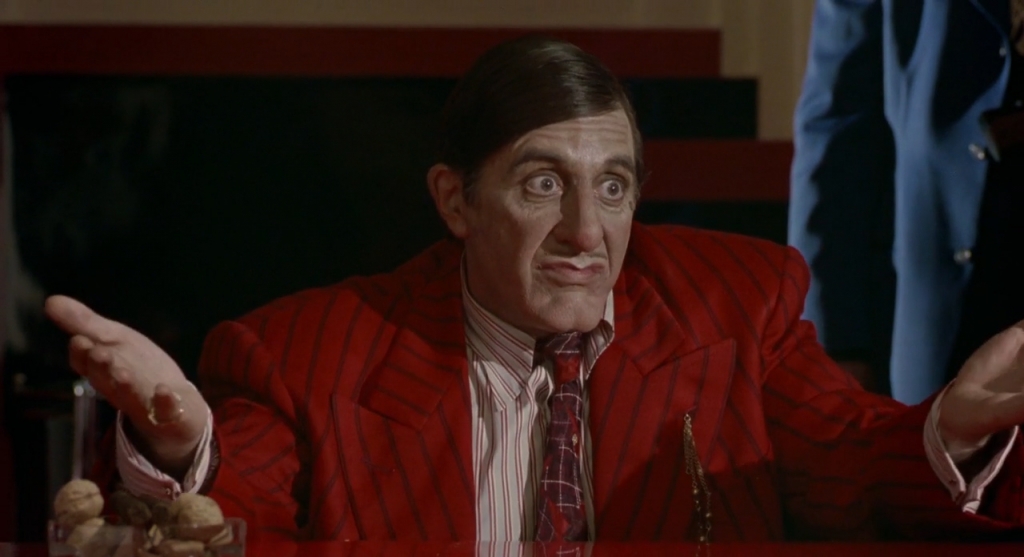
To further complicate things, the appearance of Breathless Mahoney (Madonna) puts a strain on Tracy and his longtime girlfriend Tess Trueheart. Breathless was Lips Manlis’s girlfriend and now stolen by Big Boy to be his. She’s also the only witness to Lips’ murder, and instead of cooperating with Tracy when he questions her, she instead attempts to seduce him. Madonna excels as the sultry, slow-talking Breathless, portraying the character with a sad vacancy behind the looks she is so confident in.
“I chose to do Dick Tracy because it was a great script,” she said, “if anyone can manage to be a villainess and vulnerable that’s interesting.”
Madonna’s confidence is very convincing, furthered more by her kiss-me red lipstick and Carole Lombard blonde curls. “I sweat much better in the dark,” Breathless responds to Tracy when he says he’ll take her downtown to sweat under the lights to get the truth out of her. The argument could be made that she’s possibly the only woman at the time whose tenacity could match the legendary bravado of Warren Beatty (the two, perfectly enough, were dating at the time).
In order to nail Big Boy for the murder of Lips Manlis, Tracy goes around town to Big Boy’s henchmen in order to get a confession.
The town is like Gotham City splashed with primary colors. The streets are wet, the alleys are dark, doors are green outlined with red frames, the streetlights spill purple on the streets, the cars are yellow and blue, and detectives wear violet and orange suits while trailing bad guys. The production design is a wondrous matte cityscape that included over 50 interior sets along with 25 exterior sets, all emitting neon light as much as Gotham City would swallow it up.
Over seven months were spent designing the look of the film in pre-production, with post-production lasting almost a year.
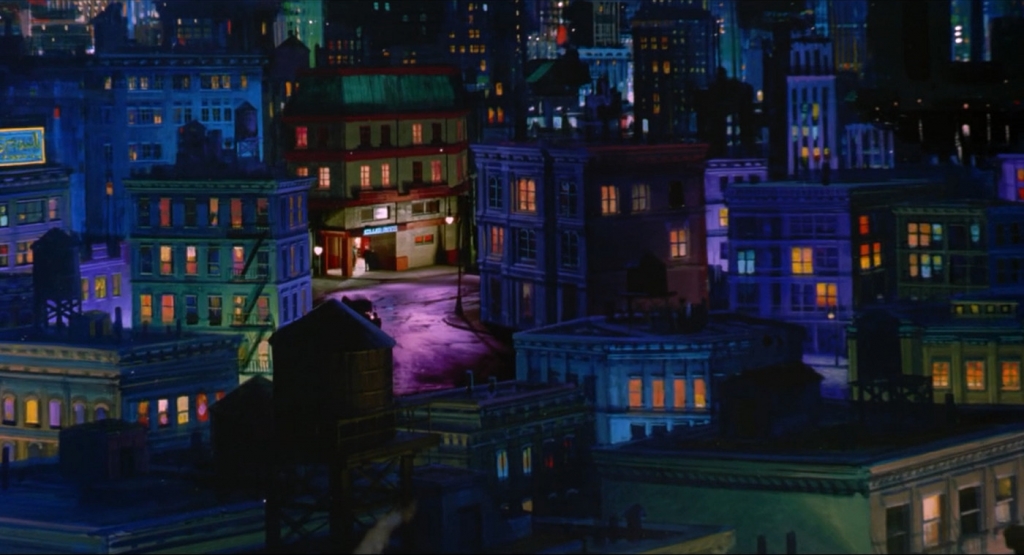
In short, Dick Tracy works as a living, breathing comic-strip, a meticulously realized and stylish vision with a contextual purpose.
Tracy is later saved by The Kid when Big Boy’s henchmen attempt to kill him.
Charlie Korsmo didn’t want to do the film initially, having just finished one (Men Don’t Leave with Jessica Lange), and wanting to take a break. It took a requested audition at Beatty’s house in the presence of Madonna (who made him popcorn) to convince Korsmo to do the movie. It’s hard to say no to Madonna.
Like young Korsmo by Madonna, Tracy is soon wooed by Breathless when she shows up at his apartment in yet another attempt to seduce him. But this time she succeeds, and their kiss is witnessed by Tess Trueheart. When not at Club Ritz singing her lonely, seductive songs (written for the film by theater legend Stephen Sondheim), Breathless acts like a woman in love…or with something to hide.
Madonna said when she first heard the original songs provided by Sondheim she feared she wouldn’t be able to sing them. “You have to find yourself in them,” she said of performing music written by others. Indeed she did find the “Madonna” in the songs, as they are vulnerable but tinged with the star singer’s undeniable sex appeal. At first, the songs seem vulnerable and sad, much like Breathless Mahoney herself. But after a moment, the viewer picks up on the explosiveness of Madonna’s sexuality underneath it all.
This blending of character and Madonna herself is why Breathless is such a successfully portrayed character in the film.
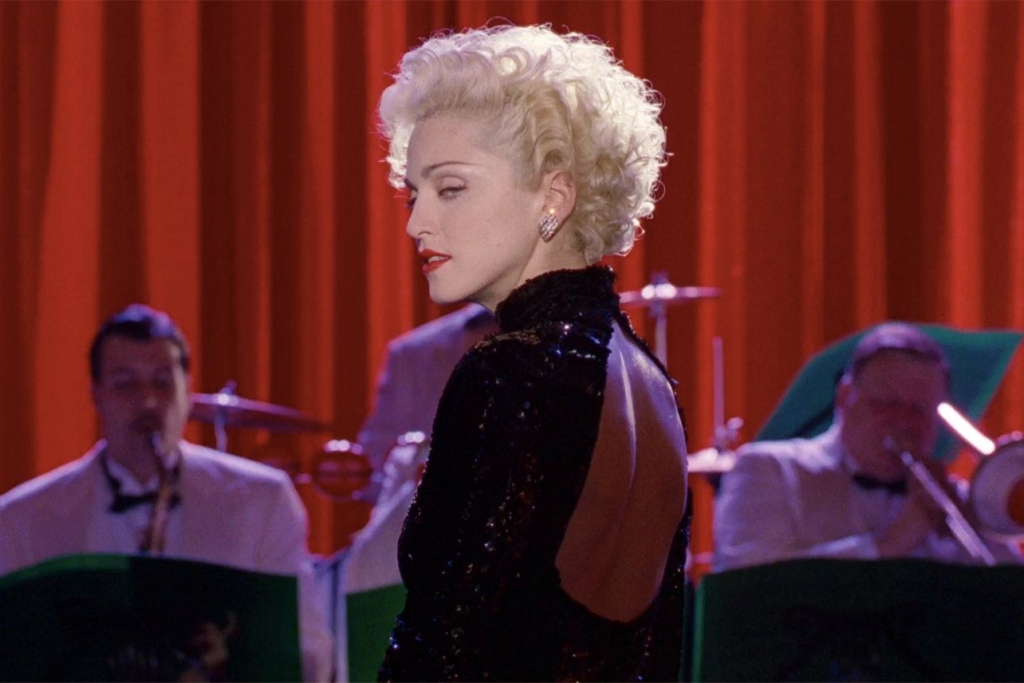
While A-listers Kim Basinger, Michelle Pfeiffer, Kathleen Turner, and Sharon Stone were all considered for the role, Madonna was the perfect fit for Breathless Mahoney. And although it was Pacino who got an Oscar nomination, it’s Madonna who steals the show.
Double crosses, romantic entanglements, and Tommy gun-waving shootouts with explosions ensue throughout the rest of the picture, including the arrival of a mysterious figure known as The Blank. But for all of the effort put into the villains (makeup applications took up to 3 hours a day), making them look like demented, comic-strip bad guys, they aren’t in the movie nearly as much as they should be. So much of the marketing for Dick Tracy focused on the many villains in the movie who makeup artists John Caglione Jr. and Doug Drexler spent months creating the faces for in order to match the comic-strip as much as possible.
This lack of villain screen time may have hurt the staying power at the box office for Dick Tracy, unlike Batman which soared for several weeks at #1 all summer long the year before.
Like the drugged girls in Batman say, “Love that Joker.” Of course, the Joker is one character, and perhaps the script for Dick Tracy simply offered too many villains? Or maybe more screen time for the villains would have equaled more money for Dick Tracy? The answer will never be known, but more screen time may have deepened the somewhat thin characters, a common criticism of the film.
Beatty has always been elusive to the press, “I don’t believe in movie publicity,” he said. But for Dick Tracy, Beatty was out in force, giving dozens of interviews and pushing the film hard. Regarding his sudden engagement in publicity, Beatty did acknowledge the change in Hollywood’s ever-growing budgets when he said, “I think the way we distribute movies now, the way we make them, requires it,” and then adding “for some reason” at the end of his observation.
Of course, the “for some reason” refers to the large budget and gigantic push from Disney to make sure the public was well aware of Dick Tracy. That and Jeffrey Katzenberg saying the film “deserves the kind of support a star like Beatty can lend to it.”
Katzenberg and Disney unleashed a massive marketing campaign for Dick Tracy.
McDonald’s had a Crimestopper Game to go along with its Dick Tracy Happy Meal toys and collectible cups. In addition to her “I’m Breathless” album inspired by the film, Madonna had a Dick Tracy themed dance number on her current world tour. Disneyland and Disney World installed live Dick Tracy stage shows, complete with photo ops as the characters walked around the parks. There were video games, action figures, trading cards, costumes, a novelization of the film, a special behind-the-scenes TV special ( Dick Tracy: Behind the Badge, Behind the Scenes), and Vans even made a Dick Tracy themed pair of shoes. MTV also ran a promotion to win Dick Tracy’s yellow trench coat and fedora as well as a spot at the world premiere of the film.
The New York Times reported in the summer of 1990 there were “more than 600 different Dick Tracy products being made and sold under license by other companies.”
In the weeks leading up to the film’s release, an unheard of 100% of people polled said they were aware of Dick Tracy hitting theaters. Disney even placed an all-new animated Roger Rabbit short called “Roller Coaster Rabbit” to play before the film (moved from its original film, Arachnophobia). “Tracy! Tracy! Tracy,” yelled Al Pacino in the film’s trailer. One Disney executive reportedly said, “you could feel the weight of the entire company pushing this thing forward. Everybody was completely exhausted on the other side of it.”
Disney was all in, and it seemed that the $54 million marketing push ($7 million more than the film’s reported $47 million budget), prepped Dick Tracy for Batman-like box office.
Disney released the film under their more adult-themed Touchstone Pictures label as a kickoff to the 1990 summer season on June 15.
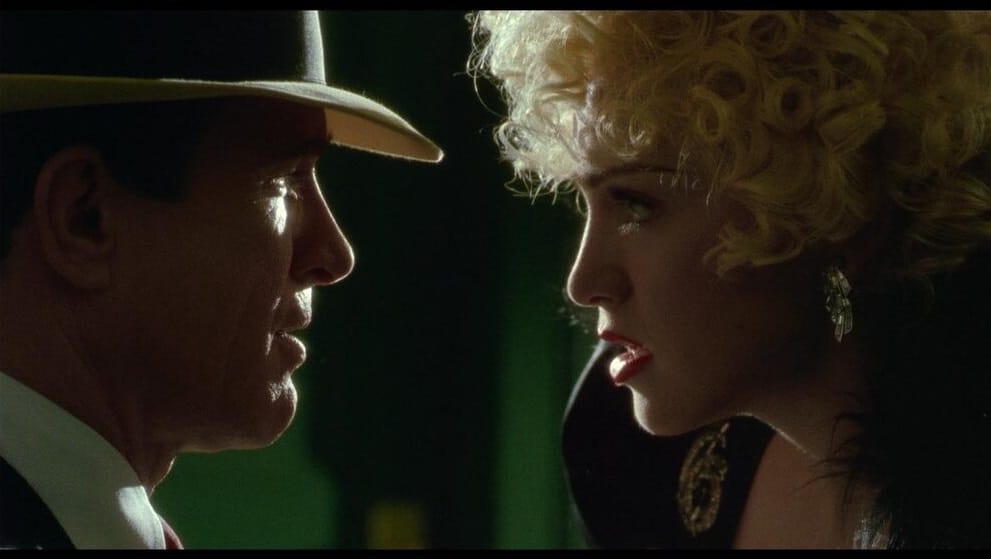
Reviews leaned positive, but the style of the film was far more praised than the substance of the story. While Chicago critics Gene Siskel and Roger Ebert agreed that Beatty’s Tracy could have been a bit more dynamic, more of a take-charge kind of character, they also highly praised the production design and Beatty’s vision for the world of Dick Tracy. One aspect of the film that was mentioned often wasn’t even a part of the actual film itself, with the saturated media campaign being called out in many reviews as overhyped.
Overhyped or not, by June 17, Disney enjoyed their biggest opening weekend ever at that point (as did Beatty) when Dick Tracy earned a solid $22.5 million, on its way to a $162 million worldwide total gross.
Regarding his take on the character, Beatty said, “Tracy in the [comic] strip was like a block of wood and all these interesting characters ran around him.” Credit must be given to Beatty for staying true to the character, as he did with the film as a whole to the spirit of the comic.
Beatty also compared the spirit of Dick Tracy to having more in common with Superman by playing the straight man and being a thoroughly honest type of character. But perhaps the movie characterization of Tracy needed a little more pizazz to play as well on the big screen as the more bland, “block of wood” Tracy played on the newspaper page.
There’s a lot to nitpick about the film, a lot to sift through searching for a reason why it didn’t perform the way Disney expected (or wanted) it to. But all the nitpicking is ultimately a distraction for the massive hype the marketing campaign generated… because, as a whole, ‘Dick Tracy’ is hugely entertaining and enjoyable just as it is.
Released in late December of 1990, the film was on sale and available to rent in time for the holidays, with a record-breaking 476,000 units being ordered by retailers. Staying in the top 25 on the video rental charts for 3 months, Dick Tracy, along with Pretty Woman, helped Disney’s filmed entertainment division jump 19% for the first fiscal quarter of 1991.
In the meantime, the film would earn seven Academy Award nominations, the most for any comic book movie in history, a distinction held for almost 30 years until Joker earned 11 in 2019.
Dick Tracy would win three statues for production design (Richard Sylbert), makeup (John Caglione Jr. and Doug Drexler), and song (Stephen Sondheim’s “Sooner or Later (I Always Get My Man),” sung live by Madonna at the ceremony. Although a sequel was unfortunately never made, Beatty’s adventures as the comic-strip detective weren’t over just yet.
Beatty would later find himself in a legal battle over the rights to the Dick Tracy character. Tribune Media Services attempted to retrieve the rights to the character in the early 2000s after declaring Beatty hadn’t produced any new Dick Tracy content. The original 1985 agreement stated, rather loosely, that Tribune would regain the rights if “a certain period of time” passed without any new projects featuring the character. Beatty then sued Tribune in 2008 saying they acted wrongly in attempting to regain the rights, as he was beginning principal photography on an all-new Dick Tracy TV special.
The judge ruled in favor of Beatty, saying “Beatty’s commencement of principal photography of his television special on November 8, 2008, was sufficient for him to retain the Dick Tracy rights.”
Now about that TV special…
Known simply as The Dick Tracy Special, the show aired on TCM in 2010. It had famed film critic and historian Leonard Maltin interviewing Warren Beatty in character as Dick Tracy, complete with yellow trench coat and fedora. The opening banter has Maltin commenting on how good Dick Tracy looks for his age, which he reveals is 107 (he was created in 1931, after all). The history of Dick Tracy is shown and Maltin and Warren Bea- er, Dick Tracy, continue their interview about…Dick Tracy.
Maltin says that all Dick Tracy movies are like biopics about his life and adventures. When asked who portrayed him the best in these “biopics,” Warren Beatty as Dick Tracy says Ralph Byrd from the 1930s. As for Warren Beatty’s portrayal? “He was…fine. He’s no Ralph Byrd.”
It’s all very bizarre but also very entertaining knowing that this is what Beatty concocted to keep the rights (he still has them to this day). As for how the 107-year-old Dick Tracy looks so good for his age? Pomegranates, Beatty says.
As late as 2016 Beatty has still hinted at a Dick Tracy sequel, saying at CinemaCon that year, “I’m serious about it, but I am slow about these things.”
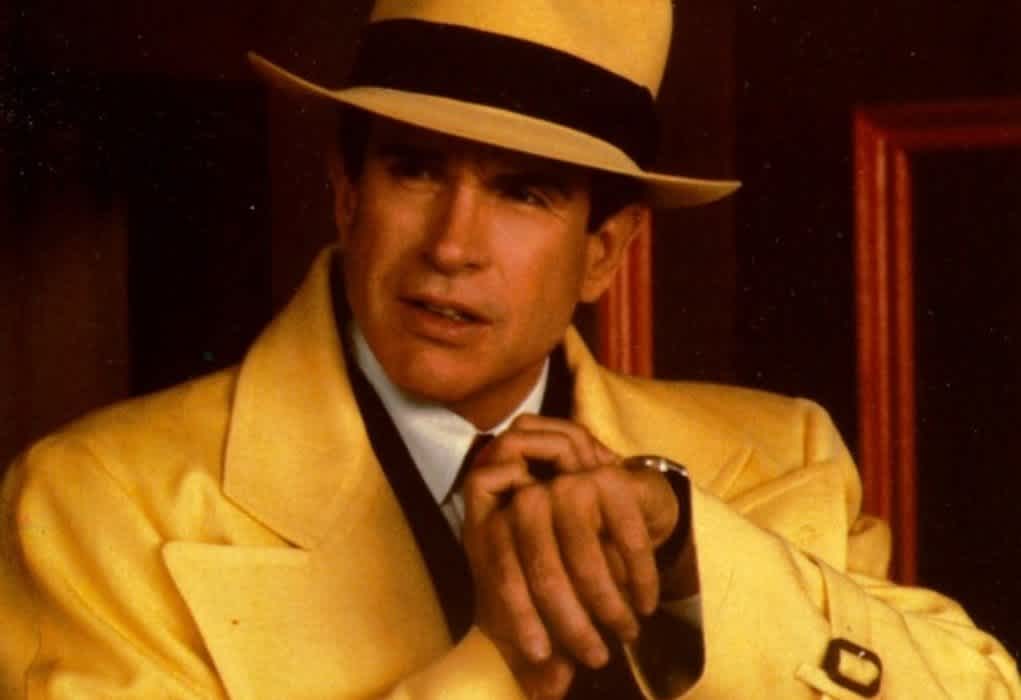
Five years later, at the age of 83, Beatty probably shouldn’t be too much slower about these things. But if Harrison Ford can gear up for potentially another round with the whip as Indiana Jones at the age of 80, then bring on Beatty in the yellow trench coat.
Looking back, Dick Tracy found itself in a very interesting time in Hollywood history. The cartoonish qualities of Tim Burton’s Batman in 1989 had just the right amount of dark grittiness to make it a comic book movie that could exist in the real world. On the other side of 1990, right around the corner was the computer-generated imagery breakthrough of 1993’s Jurassic Park. In contrast, Dick Tracy was a tangible world created to exist only in the film itself.
Matte backgrounds were painted by Harrison Ellenshaw (his father, Peter Ellenshaw painted the backgrounds for Mary Poppins), a tedious makeup process created the exaggerated look of the villains, and the action largely took place within the frame of each shot with minimal camera movement.
All of this combined to create a living comic book.
Film critic Robert Ebert summed up the cinematic wonder of the production design saying, “nothing in this entire movie exists anywhere except in the imagination of Warren Beatty and the people that he’s put together as a team to create this movie.”
Other than both being crime fighters and sharing composer Danny Elfman, the similarities between Batman and Dick Tracy stop there.
It was nonsensical to think that Dick Tracy would have made as much money as Batman.
What Batman did was capture the zeitgeist of 1980’s America, in particular that of New York City. A gritty film about a rich playboy doubling as a dark hero fighting rising crime and greed in a city full of corrupt politicians was familiar to millions of Americans. Batman provided a hero Americans needed at that particular moment in time, and Jack Nicholson’s Joker perfectly embodied all the reasons why a hero was needed. How could a detective in the 1930s fighting cartoonishly depicted mobsters live up to that? It was a misstep in the logic of Disney to think it could.
Dick Tracy was a hit hindered not by its content but rather by an unnecessarily gigantic and expensive marketing campaign. The argument could be made that had Disney cut the marketing budget in half, the film would have performed just as well, with more profits for the House of Mouse.
“The pressure on Warren is that he doesn’t have to be good, he has to be brilliant,” said Dustin Hoffman at the world premiere of Dick Tracy.
In a lot of ways, Dick Tracy is brilliant, and it’s because of Warren Beatty’s relentless vision and drive.
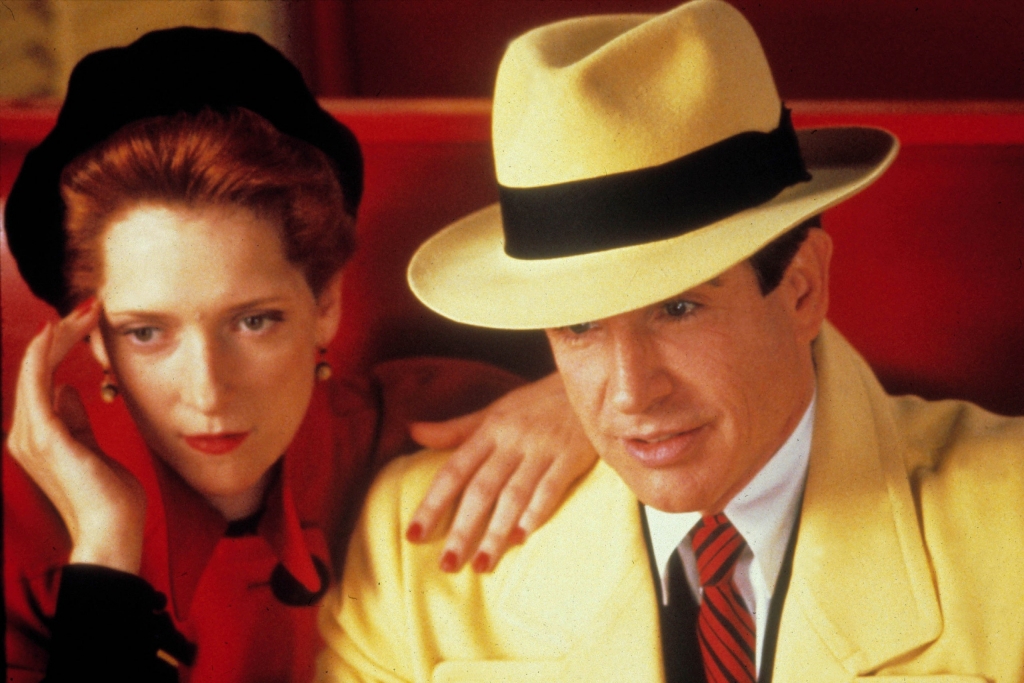
But nothing could have lived up to that overblown marketing campaign.
Max Allan Collins, who had been writing the Dick Tracy comic-strip since Chester Gould retired in 1977, and who also wrote the movie novelization, said the film version “has a timelessness that I think Beatty was striving for…and he hit it.” And that is exactly the legacy that Warren Beatty’s Dick Tracy deserves.
A movie like this has never been made before, and it still hasn’t been made since. The closest attempt would be Frank Miller’s fantastic Sin City in 2005. But having been created in the pre-CGI world, Dick Tracy remains both the most technically impressive and gorgeous comic book movie to date, an unmatched Marvel to behold (pun intended). The film deserves to be remembered for that.
As Dick Tracy says to Tess Trueheart as he turns in the doorway on his way to stop another crime, “you’re one in a million.” So, too, is Warren Beatty’s Dick Tracy.



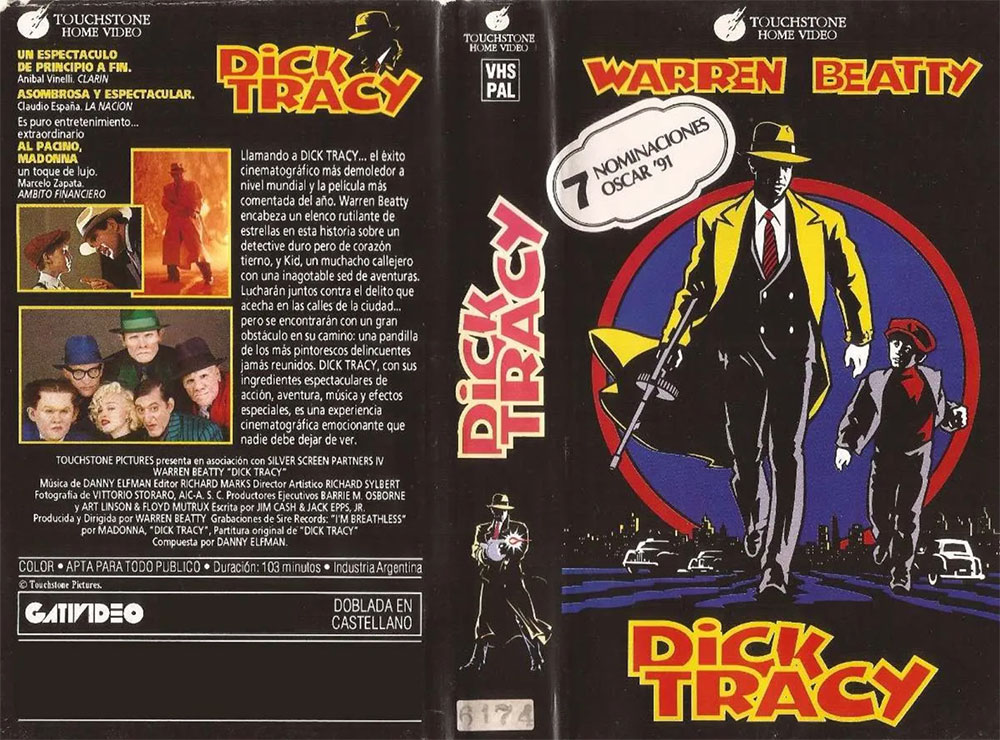
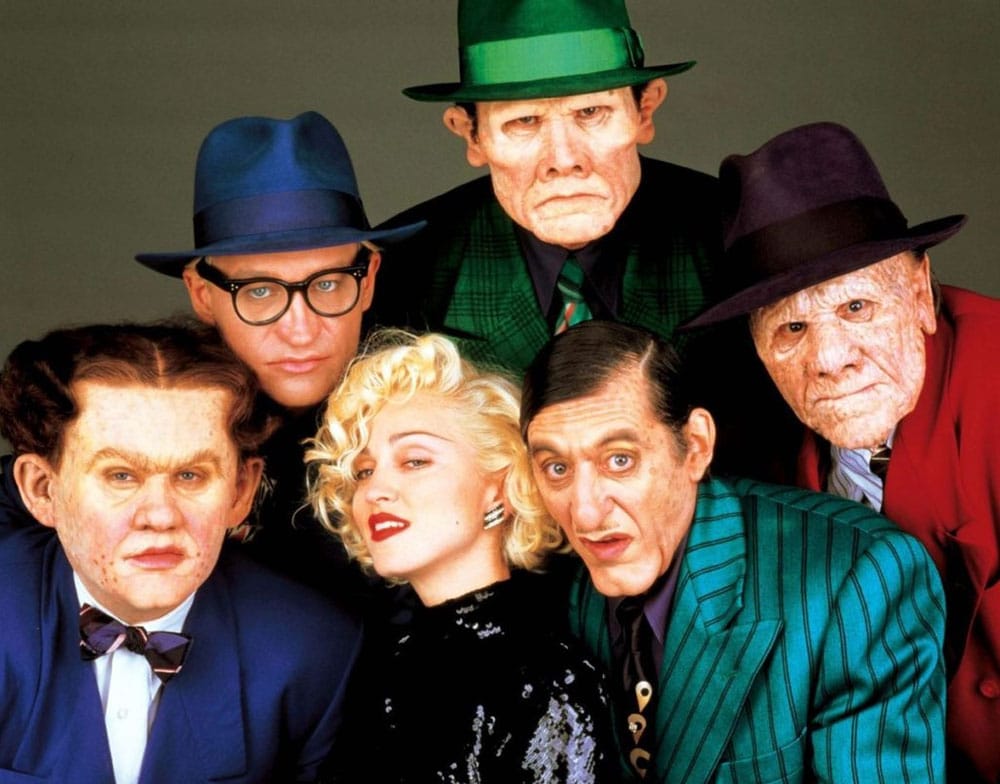
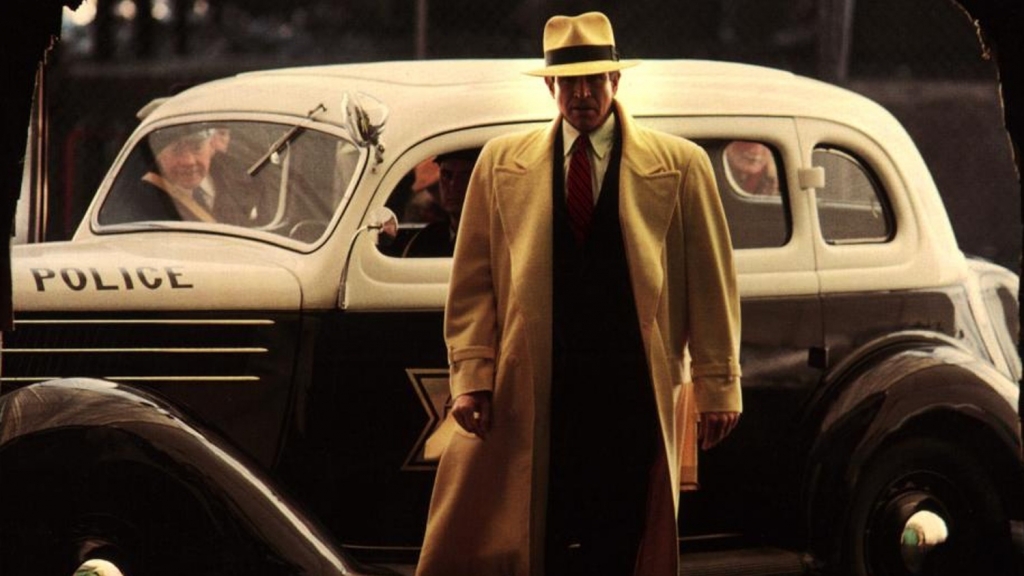

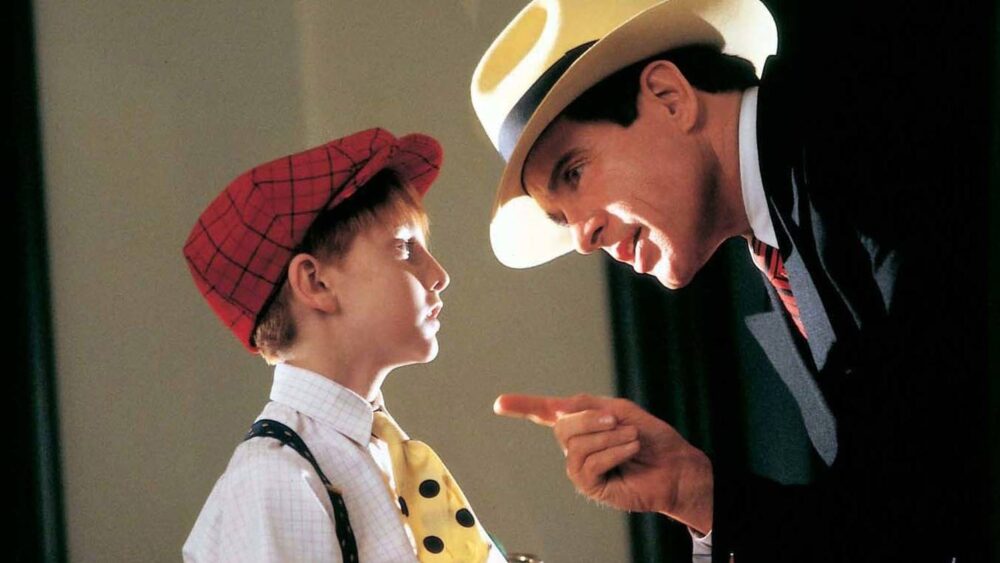







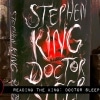
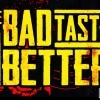



Follow Us!